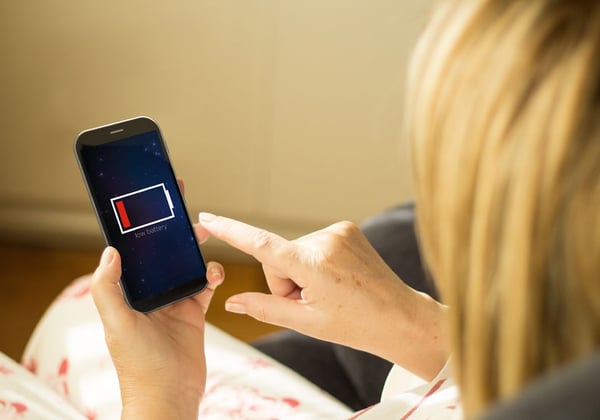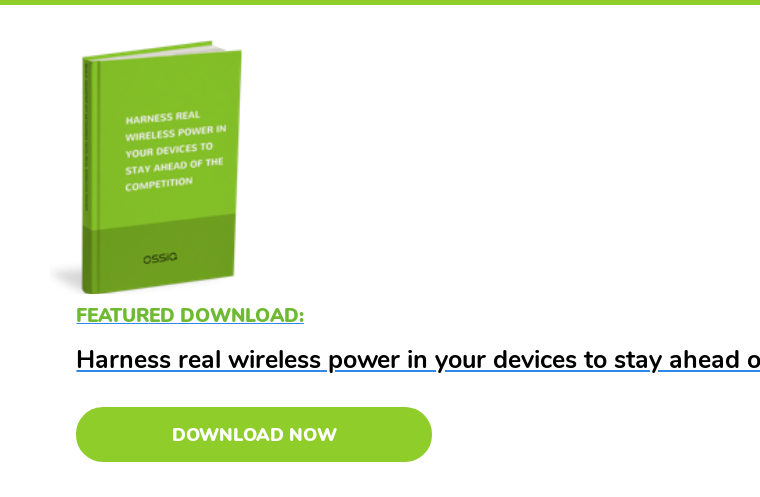Which Wireless Power Solution Is Best For You?
One of the most used and abused terms in state-of-the-arts technology today is the term “wireless power.” Some take the term literally: if the power copper of the wire cord does not reach the wall, then it is wireless. One example is the pad chargers we see everywhere.
But taken too literally, almost every device in use today uses a transformer coil that joins two power lines to transfer the power between them magnetically, but you can hardly call your fridge at home “wireless.” (Fun fact, phone pad chargers use exactly this technique, but split the transformer into two pieces to power the phone coil from the pad coil.)
If our wireless data like Wi-Fi worked “wirelessly” like our pad chargers, we would not call that a “wireless network.” Wireless means mobility, freedom, and imprudence.
Pad charging technology has a place in our world, for example, charging electric cars, but it’s hardly useful for your phone and definitely not practical for wearables.
For Real Wireless Power, that is, without the need for pad chargers or plugging in, we need it to be: efficient, targeted, mobile, non-line-of-sight, and safe. Let’s dig deeper.
- Efficient: The power must be focused; it has to only or mostly go directly to your selected devices to provide the performance you need, and not all over the place.
- Targeted: Power should go only to the device of your choice, and not to all devices in the vicinity.
- Mobile: You should be able to move around while the power is delivered without getting disconnected from the power source.
- Non-line-of-sight: You should not have to sit in front of the power transmitter to get power, much like how you use Wi-Fi without necessarily knowing where the Wi-Fi hub is placed.
- Safe: We accept Wi-Fi and Bluetooth as safe. Wireless power should be at the same safety levels.
Let's consider the available technologies on the market today and compare them to Ossia’s Cota Wireless Power technology.
First, Let’s Look at Pad- or Mat-Based Wireless Charging
Touch-based charging, that is, devices that need to either touch or be very close to a charging mat or pad, is based on induction coupling and magnetic resonance technology.
This type of charging technology has been around for cell phones around seven years now (40 years if you consider electric toothbrushes), and is popular because it delivers about the same energy as being plugged in directly.
Because you lose mobility while your phone is charging on a charging mat, we'll remove it from the wireless power list and consider it as “contactless” power. Useful, but not the definition of Real Wireless Power.
Does Beamforming RF Wireless Power Qualify as Real Wireless Power?
Radar systems have been using beamforming techniques since the early 1940s. So why hasn’t this technology taken off?
To deliver power using beams, a lot of knowledge of the environment has to be known; this information is difficult to discern using regular sensors. For power delivery to work, the transmitter needs to have the following:
- The precise location and orientation of the receiver device.
- The exact antenna behavior of the receiver device.
- The precise location of the transmitter in the environment. Location allows the transmitter to know how to send the beam between it and power the receiver device.
- Knowledge of the location and quantity of the people in the room, so that it can avoid anyone who is standing between the transmitter and receiver device. People may intercept and absorb the energy intended for the device.
- The precise location and reflectivity of the walls, floor, ceiling and furniture in the room, so it can bounce the signal on its way to the receiver device, even when it’s not in line of sight. (Even with this knowledge, currently, no one has demonstrated that this is possible.)
Knowing this is a VERY tall order for beamforming technologies, especially because it all needs to be known constantly, so that the power tracks the device and beam power to the device safely and consistently.
Some transmitter technologies have opted to scan the environment as a sort of radar to collect this data, but this is always a slow process and prevents the ability to track the device and deliver power safely in real time.
Beamforming is a technique that works at great distances and is not suitable for indoor power delivery. Modifications to this technique are possible, but computationally expensive and do not scale.
It’ss safe to say that beamforming is not the best way to deliver wireless power safely and continuously; we need to look elsewhere.
Curious About Ultrasound Wireless Power?
Many researchers have been working to avoid the regulatory safety requirements and limitations of using electromagnetic (EM) radiation. It makes sense to consider ultrasound as an alternative for safety reasons. Afterall, we scan our baby embryos with ultrasound and our car parking sensors use it. However, baby scanners and parking sensors use 1/1,000 the power needed to charge the smallest device. Small quantities of ultrasound may be safe, but that doesn’t mean large quantities are. Just consider any medication or even table salt: would you survive a day eating 1000 times your normal daily salt intake?
Unfortunately, ultrasound systems also have all the same line-of-sight limitations as beamforming. In addition, ultrasound as an energy transfer technology suffers from an inherent limitation of the science: air absorbs ultrasound.
Unlike loss of signal with distance, ultrasound energy above 80KHz is absorbed by air at a rate of 50% every meter of distance. This means that 1000W of ultrasound energy going through air will lose 999W over 10 meters on top of the beamforming path loss. Such losses make ultrasound virtually useless in the delivery of power over any appreciable distances.
Another disadvantage of ultrasound? Nearly all materials obstruct it, from walls to your pants pocket.
Is Laser (or Beams of Light) Wireless Power the Answer? Not Quite.
Laser technology is an interesting approach to send power over distance, because air does not create any meaningful obstruction in short distances and lasers are naturally focused.
However, beams of light suffer from the same limitations as beamforming, and it’s difficult to use invisible multi-Watt lasers around people, because of safety issues.
What makes matters worse is that laser light beams in a closed chamber can create reflections of the beam that can cause people (and pets!) serious eye harm, even if exposed very briefly.
Like beamforming and ultrasound, lasers are also obstructed by almost any opaque material and have difficulty with glass surfaces, which may reflect beams to unintended locations.
So How and Why Does Cota Real Wireless Power Work?
Cota Real Wireless Power technology is based on a unique and novel technique that enables targeted, focused, and inherently safe wireless power delivery using radio frequency (RF) signals.
Cota Is Inherent Safe
The key to Cota’s inherent safety is the use of a low signal “beacon” from the power receiver device that illuminates the paths available for RF signals from the receiver to the transmitter. Paths that reach the transmitter are clear of humans and obstructions and they can use reflectivity of environment.
Cota Technology Is Targeted, Mobile, and Efficient
Because RF signals can travel both ways, this ensures that the signals going from the Cota transmitters can now follow the same paths back to the receiver unit. This process is repeated 100 times per second, which ensures that the signals are always tracking away from any objects or people in the environment and always targeting the receiver device. No obstructions means continuous, safe power delivery even when the receiving device is on the move and not in line of sight of the transmitter.
What’s more, Cota can send power wirelessly to multiple devices and allow you to manage access and security via the cloud.
Cota Is Non-Line-of-Sight
Cota’s bouncing beacon signal — no line of sight required — is a striking contrast to all other forms of remote wireless power. Other systems utilize algorithmic approaches to determine the location of the receiver device, and then work to find ways to avoid people in the room. Cota inherently avoids people, pets, and all organic matter.
In fact, direct line-of-sight is a requirement of all other proposed wireless power technologies. Requiring line of site limits usability, convenience, and innovation.
Safe, Effective, At-a-Distance Wireless Power
Cota Real Wireless Power is the only non-line-of-sight, safe wireless power solution that delivers power without wires, pads, or cables at a distance, without any user intervention required.
By leveraging the simplicity of the physics of the beacon and without the need for software algorithms, Cota’s reliability and efficiency compares with Wi-Fi and Bluetooth. Soon, we will all be using Cota every day, while hardly being aware of it, just like we use Wi-Fi.








